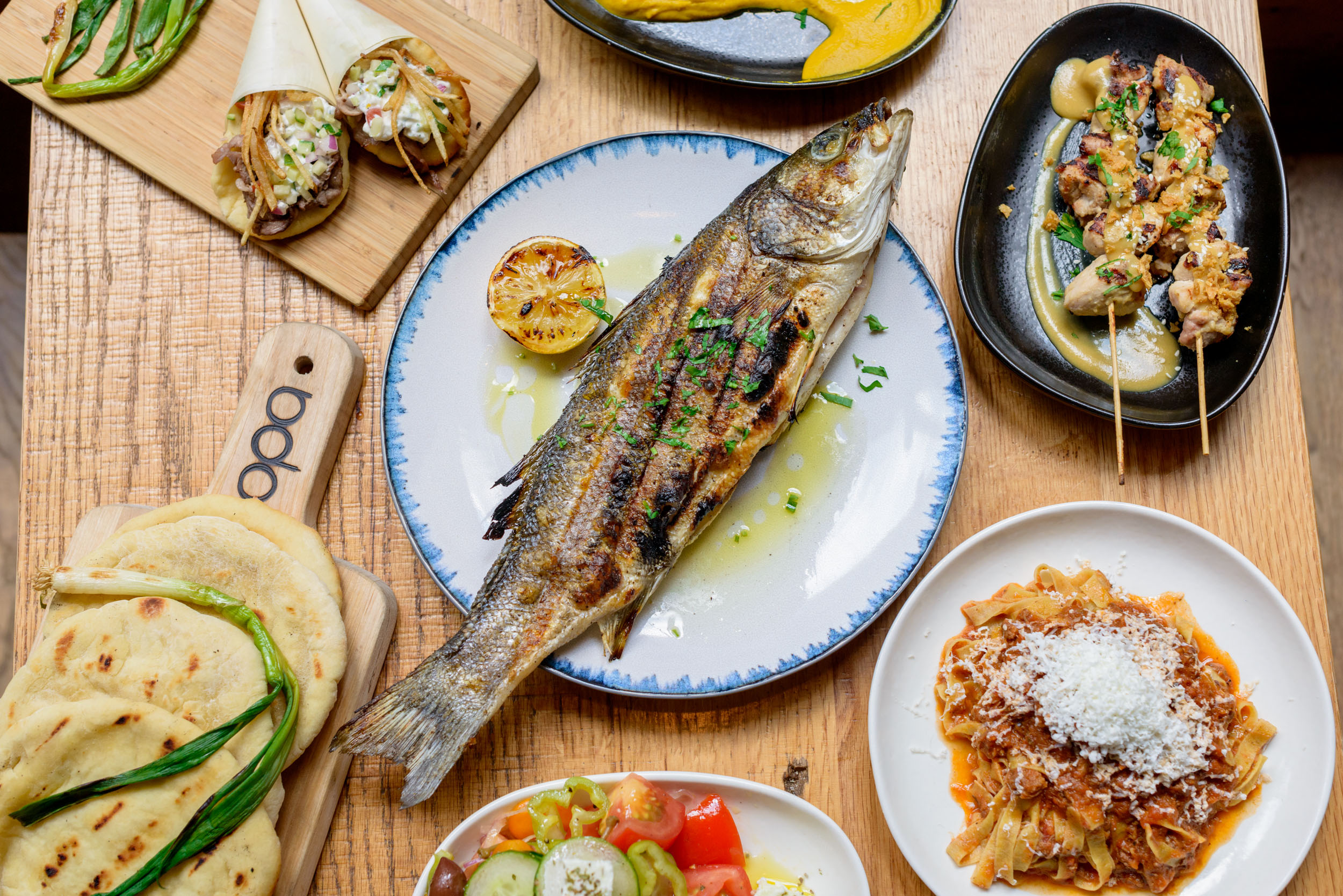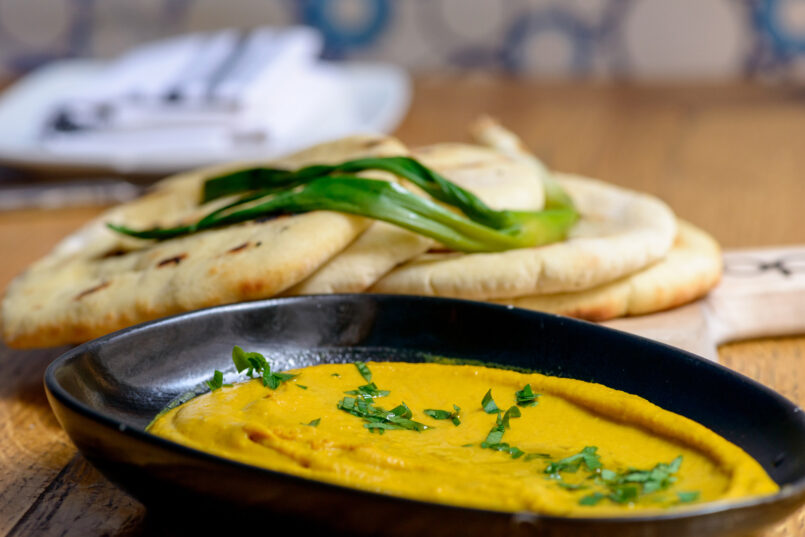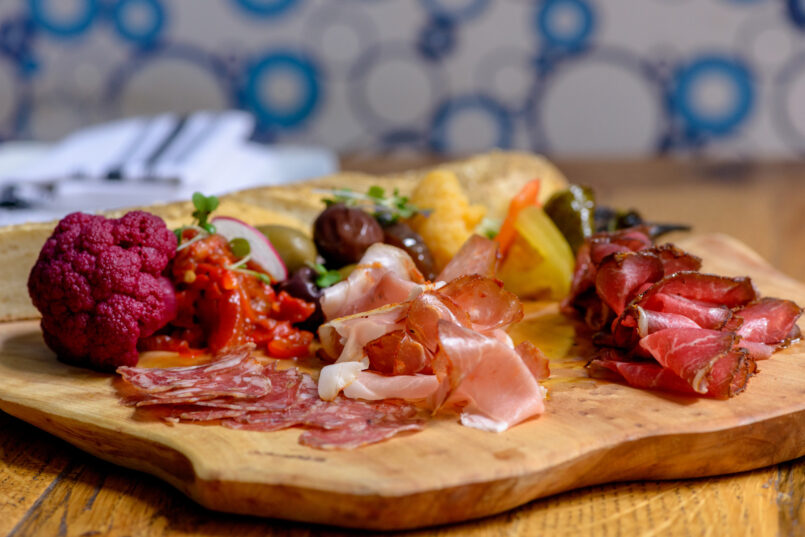The only things we seem to know about Greece in 2015 are that its economy is in tatters, its governmental heads are in argumentative disarray, and its people do not want the whole of Europe bailing them out with any sort of austerity-filled referendums. This isn’t the Greece we learned about in school: the country with its deep blue Aegean and Ionian seas and its seat-of-learning capital Athens, its 5th-century Acropolis citadel and its Parthenon temple. This isn’t even Zorba the Greek Greece. Vgoúme apó to próso̱pó mou! This Greece, with its money woes and hampered citizenry, is a country devoid of the usual joy and free spirit typically associated with it.
Only its cuisine—at once ancient and modern and completely misunderstood—seems to offer a respite from its troubles. Locals in any American city know and have eaten what they believe are the tried-and-true traditions of the form: kabobs, falafel, moussaka, souvlaki, gyros, hummus. “Don’t even get me started with the whole Greek salad thing,” says Chef Bobby Saritsoglou of Philadelphia’s Opa.
The present reality—no, what has always been true—is that Greek cuisine is far more delicate, daring, and, yes, progressive. “There’s so much more to be experienced with Greek cuisine,” says Saritsoglou, pointing out the hidden complexities and the rarely known ingredients and techniques of Greek cooking that he’s using at Opa.
Thankfully, there’s a minor boom going on in Greek restaurants. Philadelphia’s popular Kanella is expanding their property and menu. Opa, which has been around for four years, recently brought in the innovative Saritsoglou, whose resume includes the Michelin-starred Varoulko in Athens.
Other nu-Greek spaces are going strong in the United States, with additional tavernas to join them soon. Top Chef contestant Mike Isabella opened Kapnos along DC’s famed Fourteenth Street Corridor in 2013. Taxim is a critically acclaimed and decadent addition to Chicago’s Wicker Park. Brooklyn’s modernist Avlee Greek Kitchen is a longtime favorite of local families. There’s also the highly-anticipated Kavala Estiatorio on 50th Avenue in Long Island City that’s due to open its doors soon. “Greek food is happening, and big,” says Saritsoglou, wriggling his epic mustache.
At Opa, with its open-air, back-of-the-house beer garden, there’s a tapas vibe to the proceedings—something unheard of in Greek restaurants.
At Opa, with its open-air, back-of-the-house beer garden, there’s a tapas vibe to the proceedings—something unheard of in Greek restaurants, which typically heap huge, family-size dishes at diners. “This is a sign of the new Greek cuisine,” says Saritsoglou. “Things are more delicately handled than in the past, without the clichés.” Here, the traditional spanakopita (a fluffy house-made filo dough layered with spinach, barrel-aged feta cheese and kefalotiri) and dolmades (grape-leaf cigars stuffed with ground beef and walnuts) are gently re-done as hearty appetizers. Grilled chicken or swordfish souvlaki are lovingly marinated and crispy skinned. Everything here is house made, from the egg pasta of the hilopites filled with sea urchin and gulf shrimp to the soft, oiled slices of pita bread. The flashiest appetizer? The flambéed saganaki of kasseri cheese and apricot compote, served flaming. Rather than use the usual chickpea recipe for its thick hummus, Opa does it as a creamy, rich, yellow fava bean puree.
“When people talk about the farm-to-table concept, we laugh,” says Saritsoglou. “Greeks have never had it any other way.” You can taste that in the fresh zucchini, radishes, snap peas and sweet corn that fill the orzo, or the rich, dense chicken done in mustard sauce, the fresh sausage, and the bifteki and soutzoukakia dotting the meat board entrée. If you’re looking for a surprise, you’ll find it in this opulent house-cured charcuterie plate punctuated by olives and cauliflower in beet juice. “Most people don’t think we have charcuterie, but we’ve done this forever. That’s what Greek food is—full of adventure and surprise,” says Saritsoglou.
From its hearty mezé (spicy kalamata, melitzanosalata eggplant salad, a selection of Greek sheep, goat, or cow cheeses and meatball keftédes), its fish dishes, esoteric Greek country meats (such as rabbit leg and goat) and its vegetarian fare, Opa’s meals are indicative of all that is modern yet still ancient within Greek dining. “You really have to take a chance in order to experience all the diversity and flavors of modern Greek food beyond the old stereotypes and the dishes you’re used to,” says Santisglou, talking not just about his own restaurant but of Greek cooking in general. “Greek dining is a new experience, trust me.” FL












